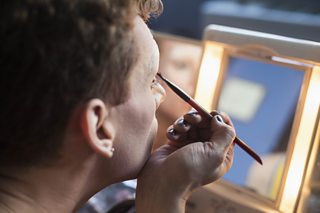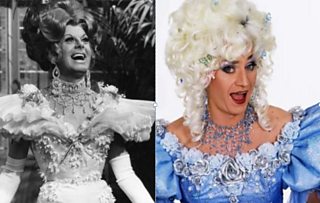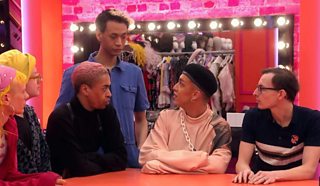How drag became big business
“Some of them aren’t old enough to go into pubs. There’s a big fanbase of young girls that we wouldn’t normally see in our audiences, trying to add every drag queen on Facebook.”

Misty Chance, a seasoned drag perfomer in Manchester, has seen first-hand the surge in drag's popularity in recent years. The audiences are different now, she tells Radio 5 Live's Wake Up to Money.
She and many others in the community put this down to the RuPaul effect. The American performer's reality competition series, RuPaul's Drag Race, which documents the search to find the "next drag superstar", has grown into an international franchise and spawned a multi-million pound industry.
Carl Schottmiller, a lecturer at California State Univeristy, is an expert in queer culture and drag performance. He is also a big fan of the US and UK versions of Drag Race and has been watching the growth of the brand with great interest.

"RuPaul and World of Wonders have done an incredible job commercialising and marketing the artform for mainstream audiences," he says.
"It's now a massive entertainment business, bringing in over 5.7 million pounds at these live events: the RuPaul DragCon events in Los Angeles and New York City."
For the competition winners, the rewards can be huge.
"Many of these contestants can end up making hundreds of thousands, if not millions of dollars," says Carl.
"It elevates your brand."
But how did the show capture the hearts and minds of such a big, global audience?
"The show does an incredible job of marketing camp. It's the campy aspects of the show that seem to resonate with all ages, all genders and all sexualities.
"They see the elements of fashion, they see the elements of humour, they see the elements of subversive politics, and it's being shown through a reality show competition."
RuPaul wasn't the first drag performer to reach the mainstream in the UK.
Theatre actor Danny La Rue was treading the boards in London's West End in the 1960s. And TV comedian Lily Savage was a familiar face in the 1990s.
But Misty, who has been working as a full-time drag queen since 2000, says there was then "a huge gap."
"Until RuPaul came along," she adds, "who's cornered the entire global market in drag."
But she says drag's newfound popularity among mainstream audiences is "a bit of a double-edged sword".

"There are good points and bad points.”
Carl agrees.
"There's a little bit of backlash within the community. Whenever a niche queer cultural art form becomes mainstream for a largely heterosexual audiences, there's a little bit of a push-back."
He adds: "Not all drag artists are able to achieve the same amount of success, and you have drag artists who've been in the game for much longer than the show's existence, who aren't necessarily getting the same access to the economic gains."
Carl believes the multi-million pound franchise could get even bigger.

"We thought it would reach its peak when it went from Logo TV to VH1... it could really go anywhere, and hopefully as many drag artists as possible get access to this economic boom that we're seeing."
Misty adds: "There’s a sense of ‘are you legitimate if you’ve not gone through RuPaul’s drag race?’
"Kudos to her."
